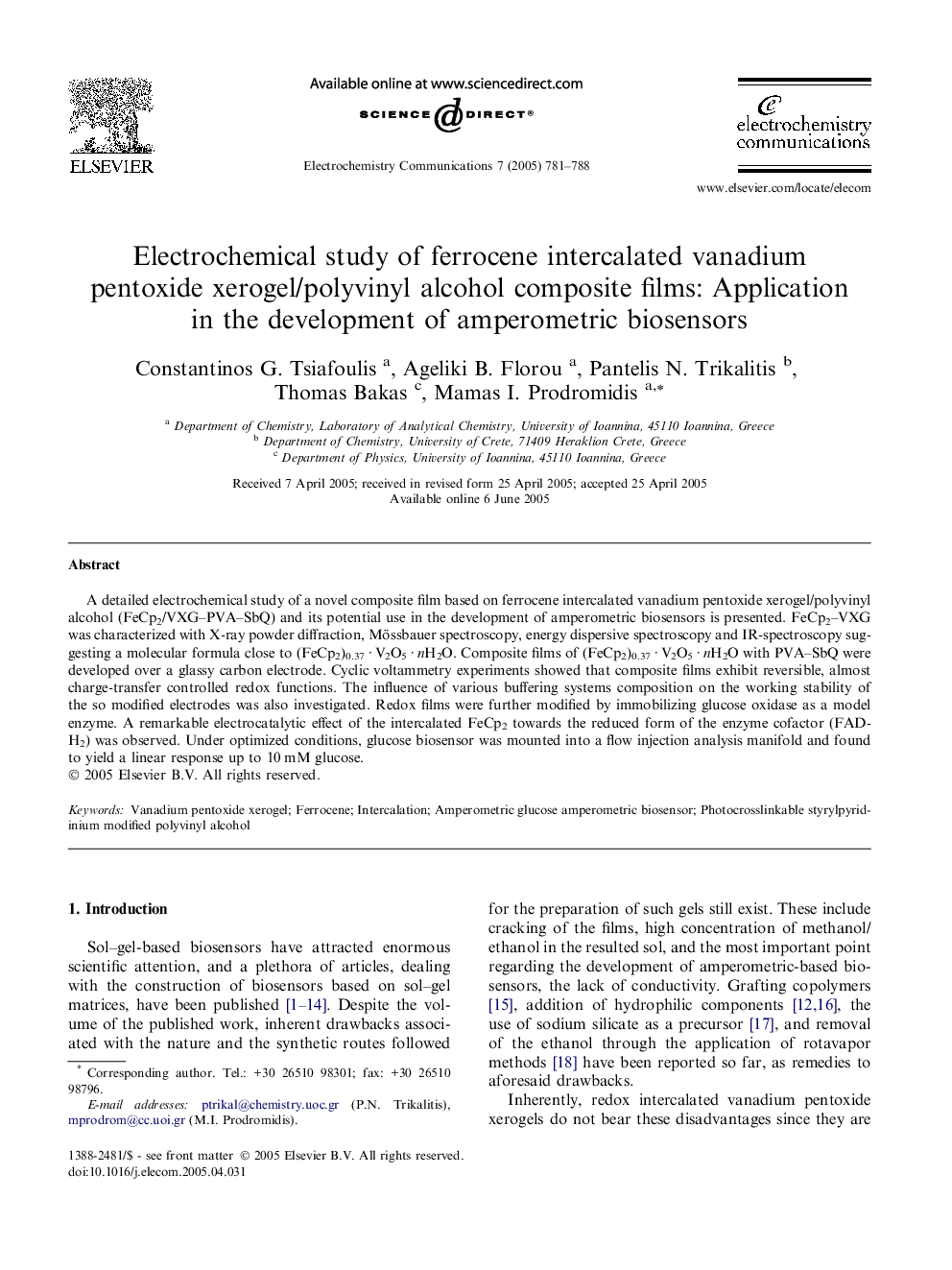| Article ID | Journal | Published Year | Pages | File Type |
|---|---|---|---|---|
| 10267171 | Electrochemistry Communications | 2005 | 8 Pages |
Abstract
A detailed electrochemical study of a novel composite film based on ferrocene intercalated vanadium pentoxide xerogel/polyvinyl alcohol (FeCp2/VXG-PVA-SbQ) and its potential use in the development of amperometric biosensors is presented. FeCp2-VXG was characterized with X-ray powder diffraction, Mössbauer spectroscopy, energy dispersive spectroscopy and IR-spectroscopy suggesting a molecular formula close to (FeCp2)0.37 · V2O5 · nH2O. Composite films of (FeCp2)0.37 · V2O5 · nH2O with PVA-SbQ were developed over a glassy carbon electrode. Cyclic voltammetry experiments showed that composite films exhibit reversible, almost charge-transfer controlled redox functions. The influence of various buffering systems composition on the working stability of the so modified electrodes was also investigated. Redox films were further modified by immobilizing glucose oxidase as a model enzyme. A remarkable electrocatalytic effect of the intercalated FeCp2 towards the reduced form of the enzyme cofactor (FAD-H2) was observed. Under optimized conditions, glucose biosensor was mounted into a flow injection analysis manifold and found to yield a linear response up to 10 mM glucose.
Related Topics
Physical Sciences and Engineering
Chemical Engineering
Chemical Engineering (General)
Authors
Constantinos G. Tsiafoulis, Ageliki B. Florou, Pantelis N. Trikalitis, Thomas Bakas, Mamas I. Prodromidis,
